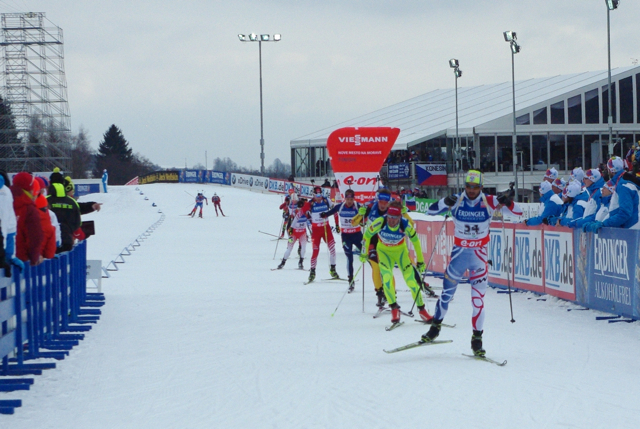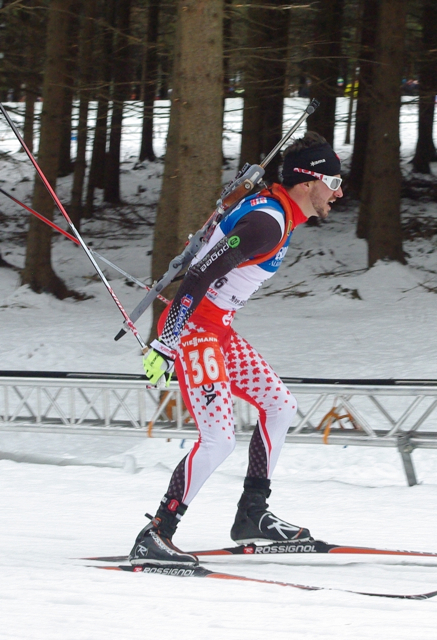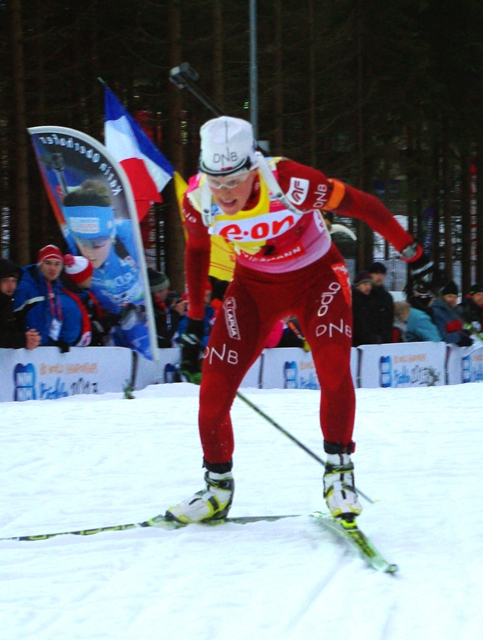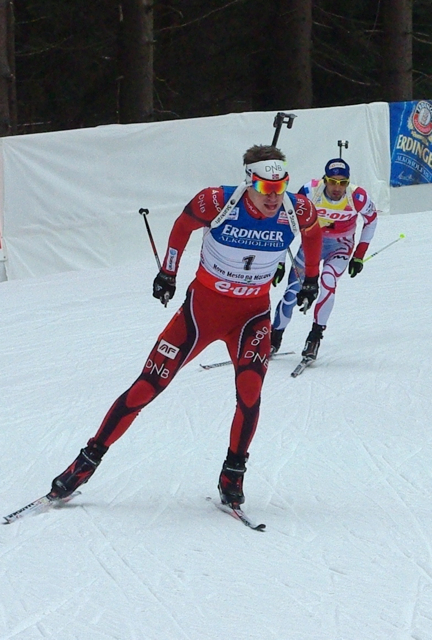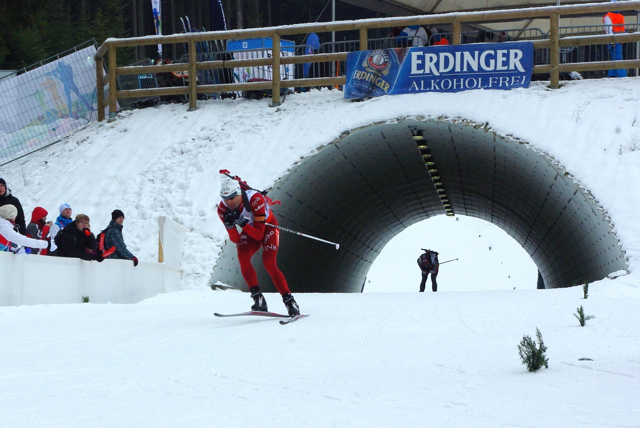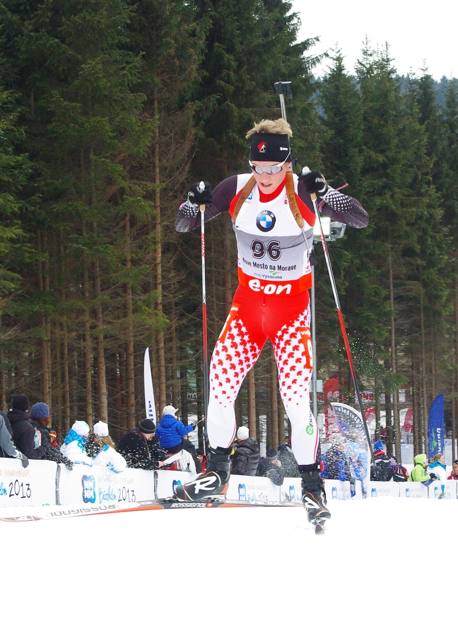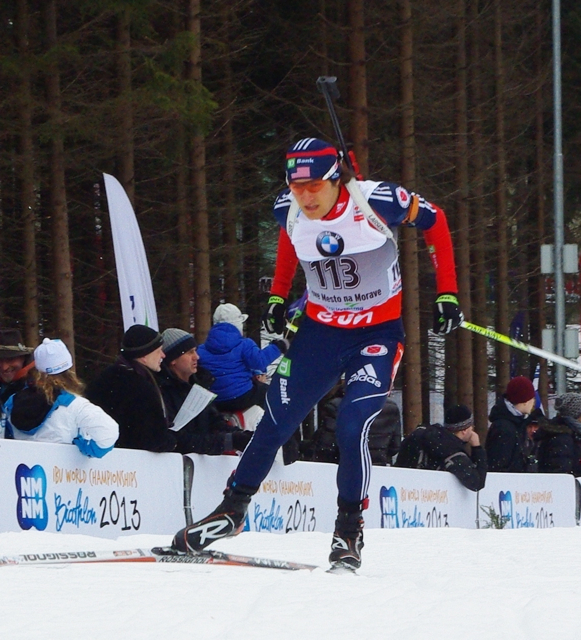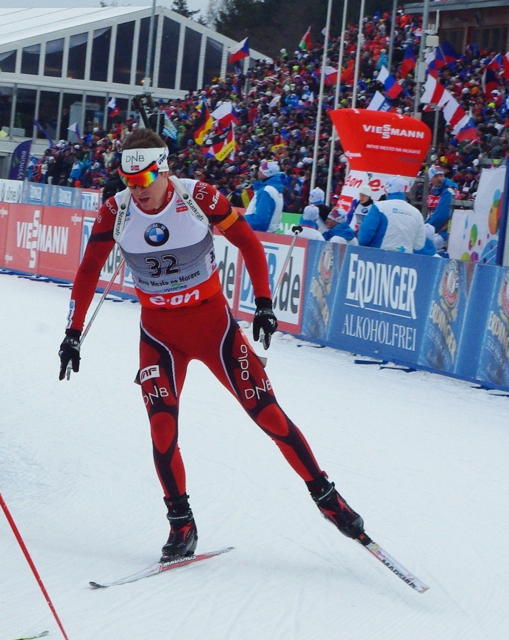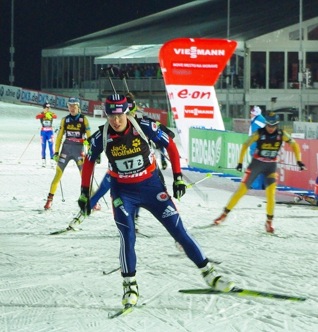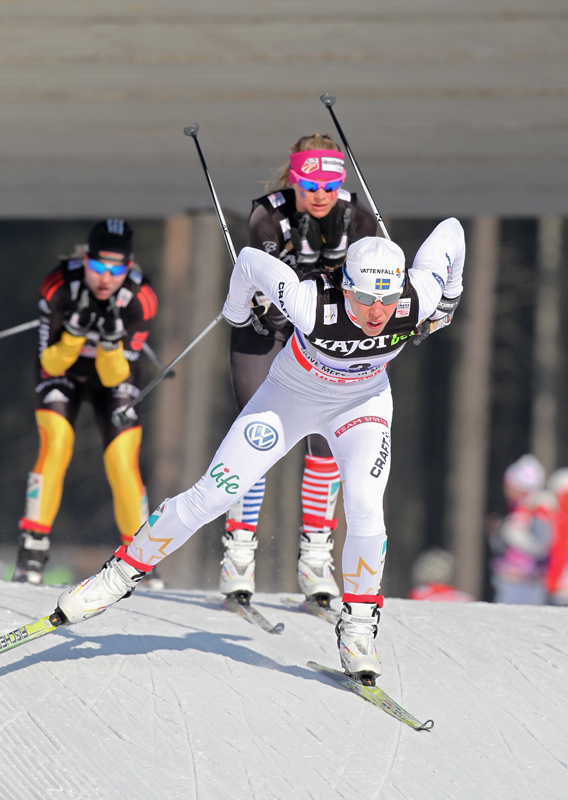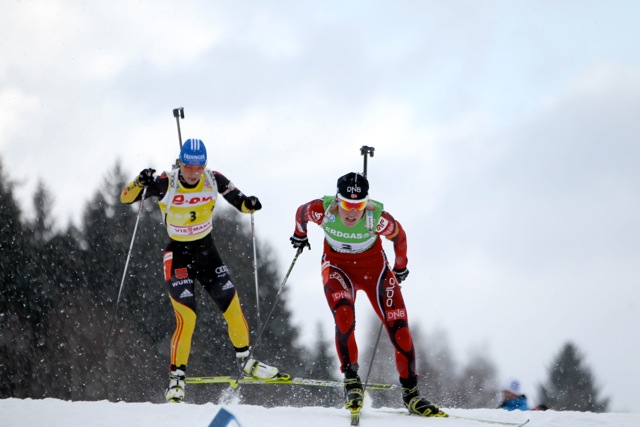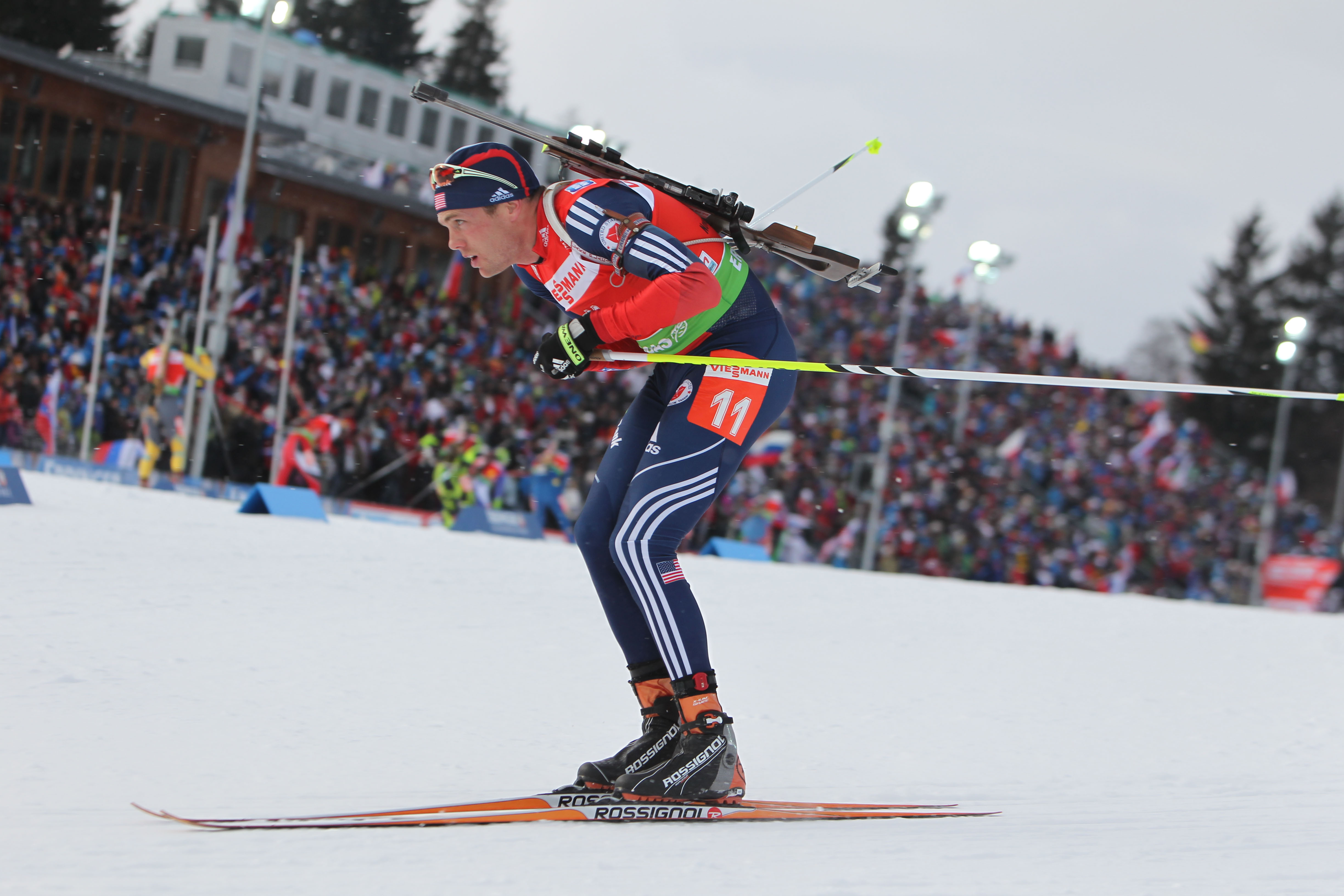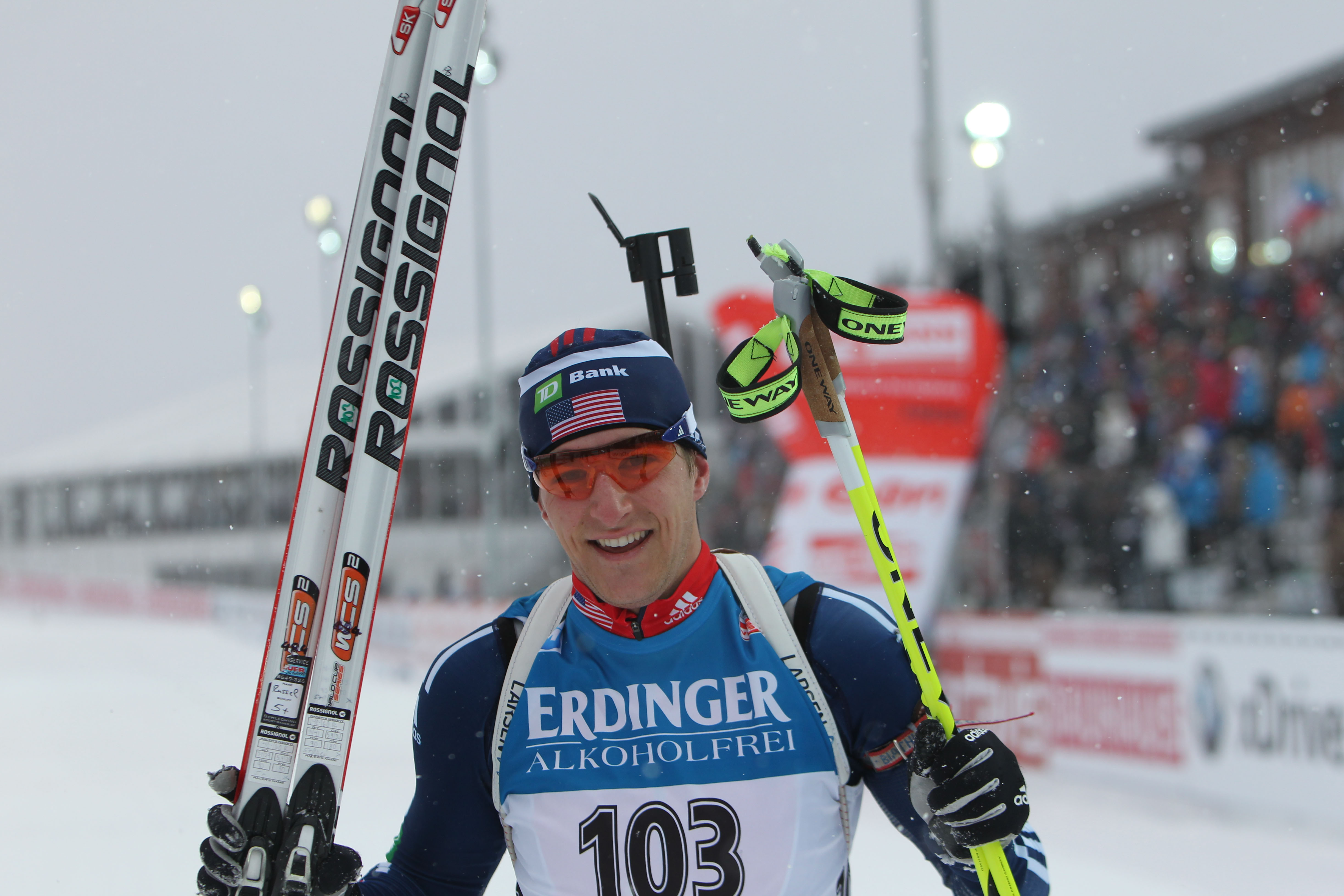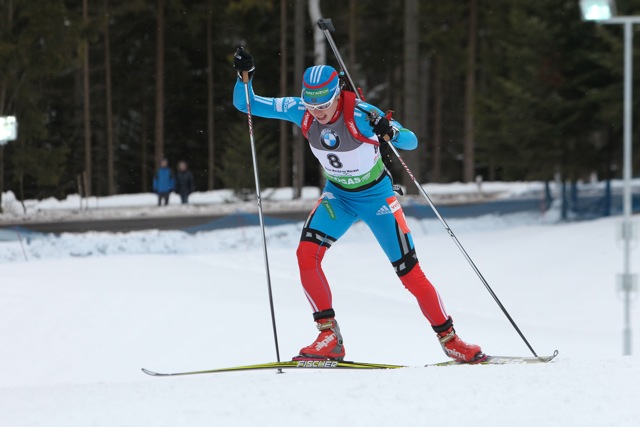Photos from the men's 12.5 k pursuit.
HomeTag
Nove Mesto
Starting in the mid-30's, Lowell Bailey and Jean Philippe Le Guellec didn't let disappointing sprint results keep them down. Bailey cleaned a four-stage race for the first time in his career, placing 13th; Le Guellec had just one missed target to end up 15th.
Tora Berger didn't have her best day, but after a quick and clean last standing stage, she was headed for gold. The other leaders weren't so lucky: after a disastrous crash, Ann Kristin Flatland broke a binding and Olga Zaitseva lost valuable time. In their places, Krystyna Palka of Poland earned silver and Olena Pidhrushna of Ukraine bronze.
When Martin Fourcade used a formidable uphill sprint to take the lead with a kilometer to go, it looked like Emil Hegle Svendsen was out of the picture, relegated to silver. But the Norwegian somehow managed to drag himself back onto Fourcade's tails and slingshot around him into the finishing lanes, then win one of the closest World Championships photo finishes in recent memory.
Biathlon World Championships men's and women's 10 and 7.5 k sprints in photos.
Le Guellec Leads Canada in Sprint; Gow Shines in First World Championships Appearance
Chelsea LittleFebruary 9, 2013
Despite three errors on the range, Jean Philippe Le Guellec felt great on his skis and finished 36th, leading the Canadian team; Scott Gow had a great World Championships debut, placing 45th. He and Audrey Vaillancourt told FasterSkier about what it's like to race their first Championships in front of such large, loud, and enthusiastic crowds.
Across both the men's and the women's teams, six of the eight Americans qualified for the 60-person pursuits on Sunday. Tim Burke was the lone man to make the top 30, while Annelies Cook led the women's squad in 45th. All six are ready to improve in the pursuit.
Ukraine Packs the Podium As Surprised Pidhrushna Earns First Career Win – a World Championship Title
Chelsea LittleFebruary 9, 2013
Olena Pidrushna has twice finished second in World Cup racing this season, but she's never won a competition - and she fell ill after the last World Cup races in Antholz, Italy. She was as surprised as anyone else to find herself atop the podium in the women's sprint, beating Tora Berger of Norway by six seconds. Ukrainian teammate Vita Semerenko was third.
Taking One Race at a Time, Svendsen Earns Second Gold of Championships, Besting Fourcade on the Trails
Chelsea LittleFebruary 9, 2013
Although he said he wasn't thinking about last year, when Martin Fourcade of France bested him in race after race and took home three World Championships titles, Emil Hegle Svendsen of Norway certainly seemed like he was on a mission, notching the fastest ski time to earn his second gold in Nove Mesto.
In the timespan of just two seasons, Nove Mesto has transformed itself from a ho-hum IBU Cup venue to an exhilarating superstadium for biathlon - one where, as several athletes claim, the fans are even louder and more enthusiastic than those at the traditional capitals of Ruhpolding and Oberhof in Germany.
Canadians Adjust to Venue, World Champs Atmosphere with 15th in Mixed Relay
Chelsea LittleFebruary 8, 2013
Rosanna Crawford started her very first World Championships race; Jean Philippe Le Guellec had his first healthy one in several years. He called the team's 15th-place finish "okay, but nothing phenomenal."
Susan Dunklee's single spare round and third-fastest ski time combined to be the best race by any woman skiing the second leg of the mixed relay. But while it may have been a highlight of the U.S. team performance, each member skied a strong race, culminating in a historic eighth-place finish, their best ever at a World Championships.
Norwegians Run Away with Relay; U.S. Pulls Off Fifth
Alex KochonFebruary 12, 2012
As the sunlight sliced through rows of majestic trees in Nové Město na Moravě, Czech Republic, Sunday around noon, a few of the Norwegians could have afforded to soak up the scenery in the women’s 4×5 k relay. They probably didn’t, though. Marit Bjørgen finally lifted her head to look around as she entered the stadium to seal the Norwegian win. With a nearly 40 second lead, Bjørgen as the Norway I anchor threw up...
January on the WC: 3 Weeks and 3 Venues
SusanDJanuary 21, 2012
Since January 1st, the biathlon World Cup circuit has given us a tour of central Europe. We started in Oberhof, Germany, a biathlon mecca that attracts over 30,000 fans. Nove Mesto in the Czech Republic, site of the 2013 World Championships, hosted us the following week and treated us to some [...]
Of all the nordic disciplines, biathlon is perhaps the one where small errors make the biggest difference. A centimeter here, a millimeter there – missing a target by that much, or little, can have drastic impacts on an athlete’s results. On Sunday, however, Magdalena Neuner didn’t make a small error. She made what is perhaps the worse mistake in biathlon: cross-firing. Coming into the third shooting stage of the 10 k pursuit with a sizeable...
American Men Unable to Capitalize on Sprint Success, Burke Leads with 16th in Nove Mesto Pursuit
Chelsea LittleJanuary 15, 2012
With the U.S. men’s team notching their best day ever in Saturday’s sprint, hopes were high that the team could place athletes in the top ten or even the top five in today’s pursuit. But although the Americans were frequently close, they couldn’t pull it off. After starting with bib 6, Russell Currier missed a shot in the first prone stage which dropped him to 12th; and while Tim Burke, starting with bib 11, was...
Shipulin Moves Up To Take Pursuit Victory; Target Malfunction, Subsequent Adjustment Break Up Fourcades’ Podium Party
Chelsea LittleJanuary 15, 2012
When Norway’s Emil Hegle Svendsen starts a pursuit race in bib 1, it’s a pretty good bet that he’ll stay there. Gamblers today, however, would have been sorry to put their money on the overall World Cup leader. As soon as the 12.5 k pursuit started in Nove Mesto, Czech Republic, Svendsen began making errors. After being caught by Frenchmen Simon and Martin Fourcade, who had started second and third, the trio skied into the...
After a frustrating individual race on Thursday, in which the top finish was 44th, the U.S. men’s biathlon team was left with two choices: wallow, or rebound for a great day Saturday. Luckily, the men in red, white and blue aren’t prone to feeling sorry for themselves. They picked up and moved on, notching top results in today’s 10 k World Cup sprint in Nove Mesto, Czech Republic. They were led by a man who...
This year’s World Cup biathlon schedule has presented a confusing dichotomy: it seems like races are either characterized by a lack or snow, or too much of it – sometimes at the same venue, just days apart. While panning television shots of athletes racing along thin white ribbons in the woods has become all too common, so too have the fuzzy, gray screens where cameras struggle to pick skiers out through heavy snowfall. “We’ve had...
If there’s one race in biathlon where shooting really, really matters, it’s probably the individual format. The distances are the longest on the circuit – 15 k for women and 20 k for men – but the penalties for missed shots are so harsh that even the added length makes it difficult to compensate for errors. Instead of hitting the penalty loop, which usually takes 20 to 25 seconds, racers see a minute added to...

